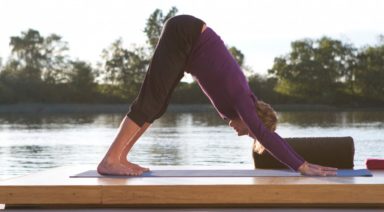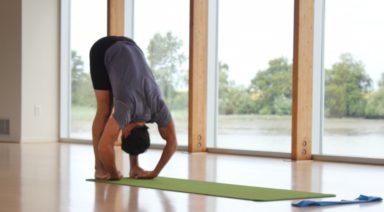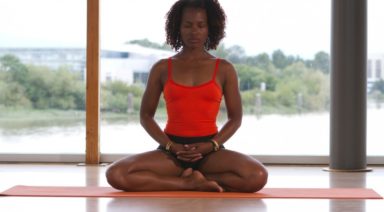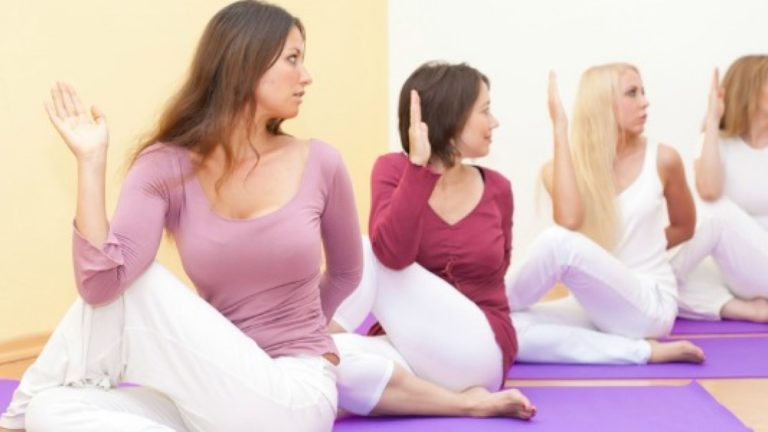
How many times a week should you do yoga to see improvement in your balance, pain level, joint mobility, and overall health? Boy, that is a tricky question isn’t it? However, it’s a question we teachers often hear.
Do you want to Tread Water, Dog Paddle or Swim Forward?
Most of our students come to yoga because of a health issue, and many come simply to reduce their stress. So how much do you want to feel better? If you do yoga once a week, that is like treading water. Two times a week, well, you’re dog-paddling and gaining some ground. But, three times a week is optimum for truly seeing improvement, because you are moving forward in your recovery, and your body is changing and healing for the better! More than that is okay, but don’t get extreme! Let your body rest and absorb the benefits of yoga, and enjoy some long savasanas!
So, the answer to how often? To really see, feel, and celebrate the benefits of yoga, try doing yoga at least two to three times a week. And yes, doing yoga poses on your own at home counts! And remember to honor the time you spend in yoga. No televisions blasting, bright lights, counts and repetitions, or magazine-reading.
Yoga is a mindful experience with your body so you can heal, and not just exercise.
About the Author
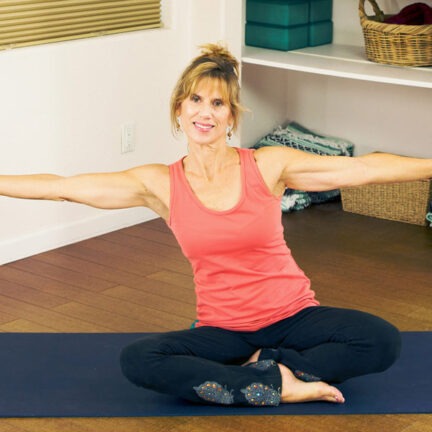
Sherry Zak Morris, E-RYT and owner of the Yoga Vista Studio in Vista, California, studied under the tutelage of octogenarian yoga teacher, Mary Cavanaugh who studied with Indra Devi, the greatest female yoga master of the twentieth century. Sherry came to yoga after years of computer-related work stress and thousands of dollars in chiropractic bills. She offers her students a guided approach to the body/mind connection and specializes in Gentle, Senior, Chair, Restorative and Classic Hatha Yoga styles.
“Yoga slowed down the aging clock and freed me from daily pain. It is my desire to share the healing gift that yoga brings to every student I meet and empower them to take control of their health, one breath at a time.”
Sherry has a degree in Community Health Education and has traveled around the world doing corporate training programs. As a corporate marketing road warrior for 25 years, Sherry experienced first-hand the ravages of stress and thus founded Yoga Journey Productions a video production company, to reach more people with the life-changing power of yoga, health and wellness.
She is a long-time Vista, California resident, wife, and mother of two active boys and two beautiful step-daughters.
Facebook: Yoga Journey Productions
Twitter: @YogaFor55Plus
Next Article

If you’re a man thinking of taking up yoga, or you’ve just started, then you must read this. It will save you time, confusion and even a bit of embarrassment.
Eyes Wide Shut Guys, when in down dog, learn to close your eyes and get into the pose. Why? One, to feel your way into a deeper stretch. Two, and perhaps more importantly, if you’re in front of a woman and she’s moving through her vinyasa, you could be making it awkward. You may want to be staring at your belly button, but trust me, those eyes may wander and make someone feel uncomfortable.
Kiss My Asana. When you’re in prasarita (a wide-legged forward bend) and you’re in a full class, please be considerate. Stagger your position with your neighbors, and as recommended in the point above, close your eyes. You also want to make sure you’re giving your female neighbors plenty of space coming in and out of the pose, just in case it looks like you’re trying to be a little too… neighborly.




